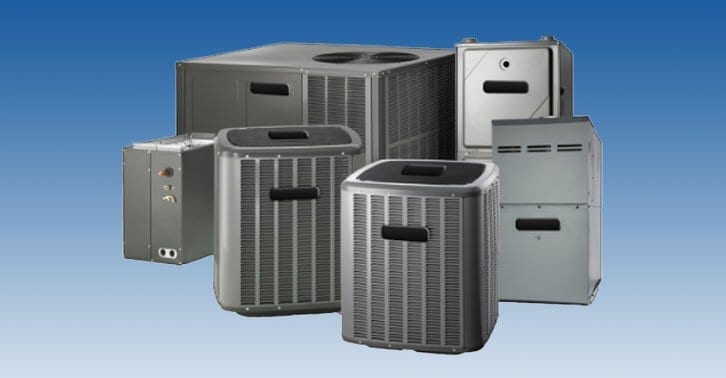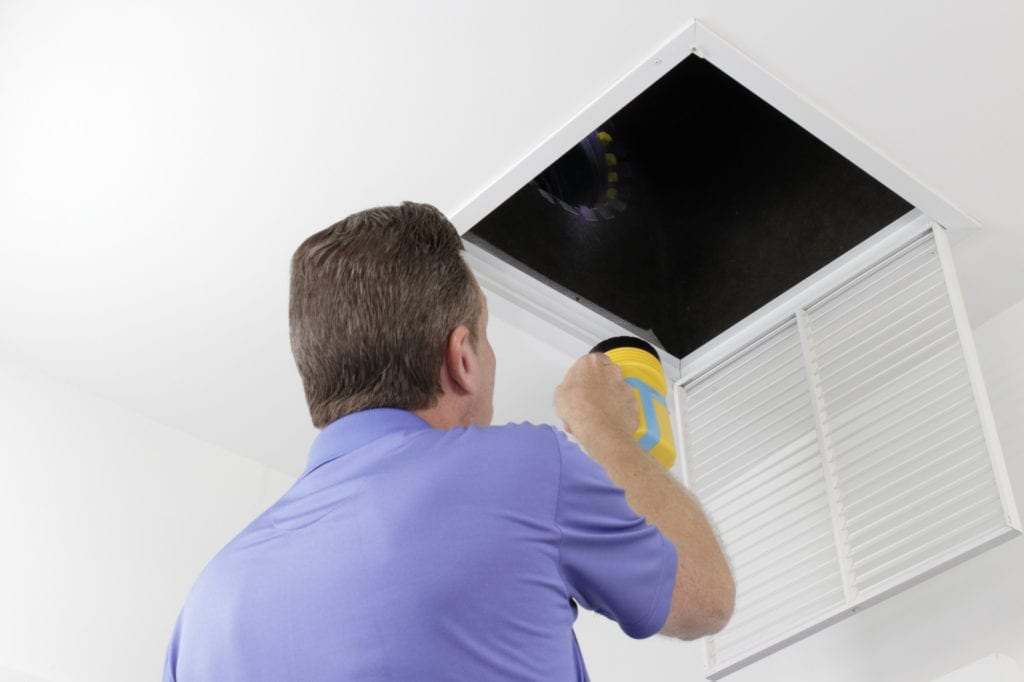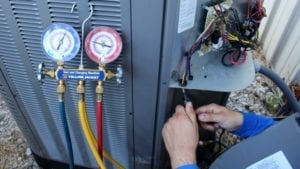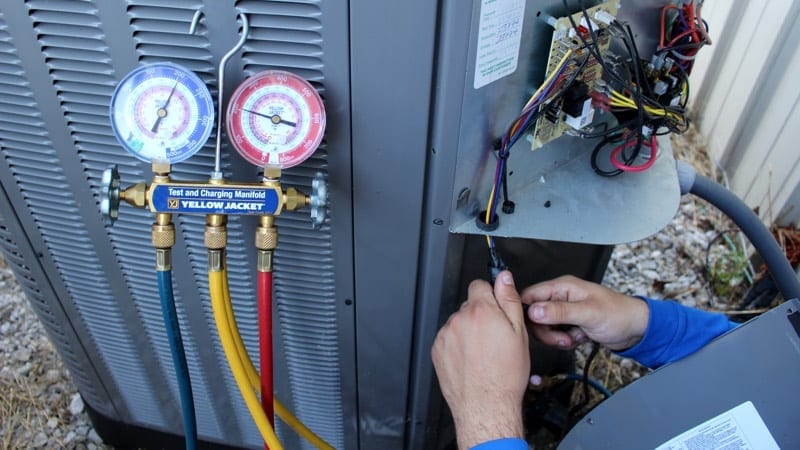How Much Does HVAC Cost in 2024?
Fill out the form to compare prices and estimates from local HVAC companies.
The average cost HVAC replacement in the US ranges between $5,239 – $15,443, while the cost to repair a unit is around $389-$471.
HVAC contractors charge from $80 – $250 for the first hour and $50 – $125 for the subsequent hours. Often times your rate is determined by the technician’s training and skill level.

Are you looking to hire an HVAC contractor? If so, here’s what you need to know about HVAC contractor costs and how to find top-rated HVAC companies near you.
Many consumers are not aware that they may reduce yearly HVAC contractor costs by maintaining their HVAC system and turning the thermostat back.
For example, reducing the thermostat by five degrees for eight hours can save 5% on your yearly heating and cooling bill.
Your HVAC system is an important part of your home. It dictates your level of comfort throughout the year.
That’s why you should take good care of it.
It is recommended to use the services of an HVAC company when you need to fix/replace the furnace or boiler. HVAC companies can also help when your air conditioner needs repairs.
But how much would that cost you?
That depends on various factors. Keep reading to learn more about HVAC and HVAC services in general.
What is HVAC?
HVAC stands for heating, ventilation, and air conditioning.

It is a broad ensemble of systems designed to change the temperature in your house depending on your desire.
During hot summer days, the air conditioning system will keep you cool. During cold winter days, the heating system will produce warmth.
HVAC systems can be easily controlled using thermostats. Some thermostats can be programmable to heat up or cool down your house when you want.
How Much Does It Take to Replace An HVAC System?
It depends on the amount of work involved, but most HVAC replacement projects can take 2-4 days to complete.
The most difficult part is replacing the ductwork. This can take 2-3 days, depending on the complexity of the project.
If just a few parts need to be replaced such as the furnace or the boiler then the job can be done in just 1-2 days.
What To Look For In A HVAC Company?
Homeowners shouldn’t choose their HVAC contractors at random.
Think about the fact that your HVAC system can make a big difference when the outdoor temperatures go to the extreme. Make sure you work with professionals to avoid frustration, anger, and unplanned expenses.

For example, try to read a lot of Google reviews from HVAC companies before deciding to work with them.
Google reviews are known to be accurate and they reflect real opinions coming from real customers.
You should also avoid HVAC companies that try to give you an estimate by phone.
It is almost impossible to properly assess the quality of the ductwork or the state of a furnace via a phone call.
Experienced HVAC contractors will give you an estimate only after doing a thorough analysis on-site. These are also some of the most accurate estimates.
Another important aspect is for your HVAC contractor to be licensed.
Think about the fact that HVAC technicians need to work with gas pipes, refrigerants, and other materials and chemicals.
You don’t want unlicensed personnel handling such complex tasks on your property. A licensed HVAC contractor is an expert in all things related to heating and cooling a house and he is more likely to do a good job than an unlicensed contractor.
Lastly, try not to settle for the lowest bidder. It’s true that you can save some money, but in the long run, the cheapest HVAC contractor might also do a poor-quality job. This can make you spend more in the long run.
How Much Do HVAC Charge Per Hour?
HVAC companies can charge various amounts depending on your location, the complexity of the project and their expertise.
In some states, HVAC technicians might charge $80 for the first hour and $50 for the subsequent hours.
In other states, you might have to pay $250 for the first hour and $125 for each hour after that.
HVAC Contractor Cost Explained
Apart from the labor price, there are other factors that make up the total price of an HVAC repair service.
For example, the technicians have to get to your place with their own vehicle. If you live in a large town, the trip won’t take that long and it won’t cost that much.
On the other hand, if you live in the countryside, the technicians might have to drive 50-100 miles to your place and that will be added to the total cost.
An HVAC contractor cost also includes parts.

Some parts such as a brand new furnace can cost between $4,000 and $6,000. A heat pump might cost $5,000. Ductwork can cost between $1,000 and $4,000 or more.
Many HVAC technicians also offer emergency services which are more expensive.
They will come to your place in the middle of the night if necessary, to fix a broken pipe.
These are a few of the costs you need to keep in mind when it comes to HVAC services.
Do HVAC Companies Finance?
Yes!
Many HVAC companies give you flexible payment plans depending on your preferences and needs.
For example, you can settle a monthly payment plan and finance your new HVAC system. You will pay a set amount each month and have your HVAC system installed right away.
Some companies also offer no prepayment penalties and competitive rates to help you finance your new HVAC unit.
Do Heating And AC Contractors Offer Payment Plans?
Some HVAC contractors offer great payment plans for homeowners.
It is a great idea to finance your new HVAC unit through an HVAC contractor because the interest rates are much lower in comparison to credit card rates.
You also have the possibility to stretch your payment for 5, 10, or even 12 years. You can pay off at any time and certain companies offer no interest options if you’re paying in just 2-4 years.
Find an HVAC Company Near You
Repairing your HVAC system or getting a brand new, customized one is easier than ever!
The HVAC contractor cost can be minimized if you use smart financing options and you get to enjoy a comfortable house in any season of the year.
To find out how you can finance your future HVAC installation project, give us a call today and we’ll assist you in the process!
Popular Areas to Find HVAC Companies:
| Lexington, KY | Thornton, CO | San Jose, CA | Pittsburgh, PA | Charlotte, NC | Fayetteville, NC |
| San Diego, CA | Houston, TX | Chicago, IL | Los Angeles, CA | Austin, TX | Dallas, TX |
| Jacksonville, FL | Roseville, CA | Columbus, OH | New York, NY | Portland, OR | Boston, MA |
| Phoenix, AZ | Denton, TX | San Antonio, TX | Philadelphia, PA | Detroit, MI | Denver, CO |
| Tucson, AZ | Anaheim, CA | Nashville, TN | Fort Worth, TX | El Paso, TX | Syracuse, NY |
| Montgomery, AL | Surprise, AZ | McAllen, TX | Raleigh, NC | Rochester, NY | Aurora, CO |
| San Francisco, CA | Mesa, AZ | Oklahoma City, OK | Baltimore, MD | Plano, TX | Virginia Beach, VA |
| Irvine, CA | Columbus, GA | Gilbert, AZ | Garland, TX | Henderson, NV | Atlanta, GA |
| Seattle, WA | Kansas City, KS | Chesapeake, VA | Arlington, TX | Sacramento, CA | Winston-Salem, NC |
| Fontana, CA | Laredo, TX | Akron, OH | Bakersfield, CA | Hampton, VA | Newark, NJ |
| Cincinnati, OH | Glendale, AZ | Toledo, OH | Saint Paul, MN | Tacoma, WA | Louisville, KY |
| Wichita, KS | Tulsa, OK | Minneapolis, MN | Huntington Beach, CA | McKinney, TX | Irving, TX |
| Fremont, CA | Greensboro, NC | Des Moines, IA | Oakland, CA | Reno, NV | Corpus Christi, TX |
| Modesto, CA | Fort Wayne, IN | Moreno Valley, CA | Lubbock, TX | Hialeah, FL | Long Beach, CA |
| Santa Ana, CA | Fresno, CA | Riverside, CA | St. Louis, MO | Richmond, VA | Spokane, WA |
| North Las Vegas, NV | Shreveport, LA | Milwaukee, WI | Las Vegas, NV | Memphis, TN | Indianapolis, IN |
| Buffalo, NY | Norfolk, VA | Chula Vista, CA | Jersey City, NJ | Yonkers, NY | Madison, WI |
| Birmingham, AL | Lincoln, NE | Oxnard, CA | Miami, FL | Omaha, NE | Albuquerque, NM |
| Orlando, FL | Durham, NC | Chandler, AZ | St. Petersburg, FL | Stockton, CA | Baton Rouge, LA |
| Tampa, FL | San Bernardino, CA | Aurora, IL | Honolulu, HI | Scottsdale, AZ | Boise, ID |
| Colorado Springs, CO | Anchorage, AK | Cleveland, OH | Amarillo, TX | Port St. Lucie, FL | Grand Rapids, MI |
| Huntsville, AL | Salt Lake City, UT | Frisco, TX | Glendale, CA | Augusta, GA | Vancouver, WA |
| Grand Prairie, TX | Little Rock, AR | Tempe, AZ | Overland Park, KS | Tallahassee, FL | Cape Coral, FL |
| Mobile, AL | Knoxville, TN | Ontario, CA | Worcester, MA | Sioux Falls, SD | Sioux Falls, SD |
| Brownsville, TX | Fort Lauderdale, FL | Providence, RI | Newport News, VA | Rancho Cucamonga, CA | Santa Rosa, CA |
| Peoria, AZ | Oceanside, CA | Elk Grove, CA | Salem, OR | Pembroke Pines, FL | Eugene, OR |
| Garden Grove, CA | Cary, NC | Fort Collins, CO | Corona, CA | Springfield, MO | Jackson, MS |
| Alexandria, VA | Hayward, CA | Clarksville, TN | Lancaster, CA | Salinas, CA | Palmdale, CA |
| Hollywood, FL | Springfield, MA | Macon, GA | Miramar, FL | Sunnyvale, CA | Pomona, CA |
| Killeen, TX | Escondido, CA | Pasadena, TX | Naperville, IL | Bellevue, WA | Joliet, IL |
| Murfreesboro, TN | Rockford, IL | Paterson, NJ | Savannah, GA | Bridgeport, CT | Torrance, CA |
| Fullerton, CA | Victorville, CA | Lakewood, NJ | Miramar, FL | Visalia, CA | Olathe, KS |
| Gainesville, FL | West Valley City, UT | Orange, CA | Coral Springs, FL | Warren, MI | Pasadena, CA |
| Waco, TX | Cedar Rapids, IA | Elizabeth, NJ | Stamford, CT | Columbia, SC | New Haven, CT |
| Carrollton, TX | Midland, TX | Norman, OK | Santa Clara, CA | Athens, GA | Thousand Oaks, CA |
| Topeka, KS | Simi Valley, CA | Columbia, MO | Vallejo, CA | Fargo, ND | Allentown, PA |
